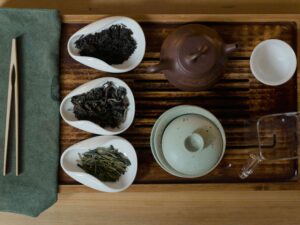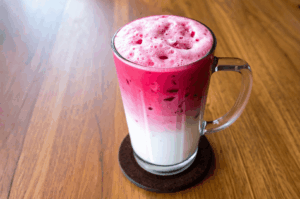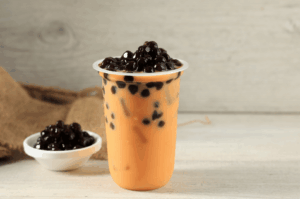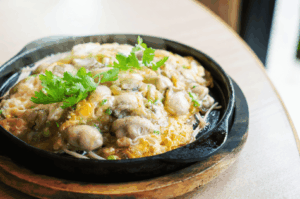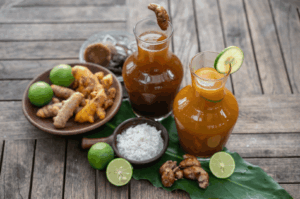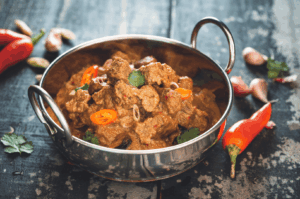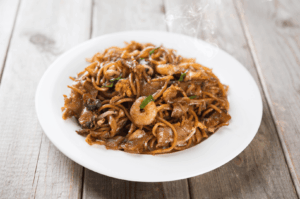
Imagine sitting on a low stool in a bustling alleyway of Hoi An's ancient town. The warm, fragrant air is thick with the scent of sizzling marinated pork, fresh herbs, and the unmistakable aroma of fish sauce and fried rice crackers. In front of you, a bowl of Cao Lau noodles gleams, their golden brown ribbons nestled beneath generous pork slices, crisp pork crackling, crunchy bean sprouts, and sprigs of fresh green vegetables from the famed Tra Que Vegetable Village. This noodle dish, renowned for its unique lye water noodles and deep ties to Vietnamese cuisine, is rarely found outside the same region in Central Vietnam, and every bite offers a tangy, smoky, and savory taste that's as mysterious and captivating as Hoi An itself.
Cao Lau is more than just a meal; it's a culinary icon rooted deeply in Vietnamese cuisine and food traditions of the ancient town. This authentic Cao Lau can be experienced only in Hoi An, thanks to its use of hyper-local ingredients like lye solution from the Ba Le well and ash from Cham Island. Whispers of Japanese cuisine echo in the unique noodles, while hints of Chinese flavors linger in the pork marinade and char siu pork—making this a noodle dish unique to Vietnam, but unmistakably shaped by centuries of culinary exchange. In this article, we’ll explore Cao Lau history, dive into its ingredients, the special role of fresh herbs and vegetable village greens, and the age-old traditions of preparing and serving this beloved Hoi An specialty.
The Mysterious Origins of Cao Lầu in Hoi An
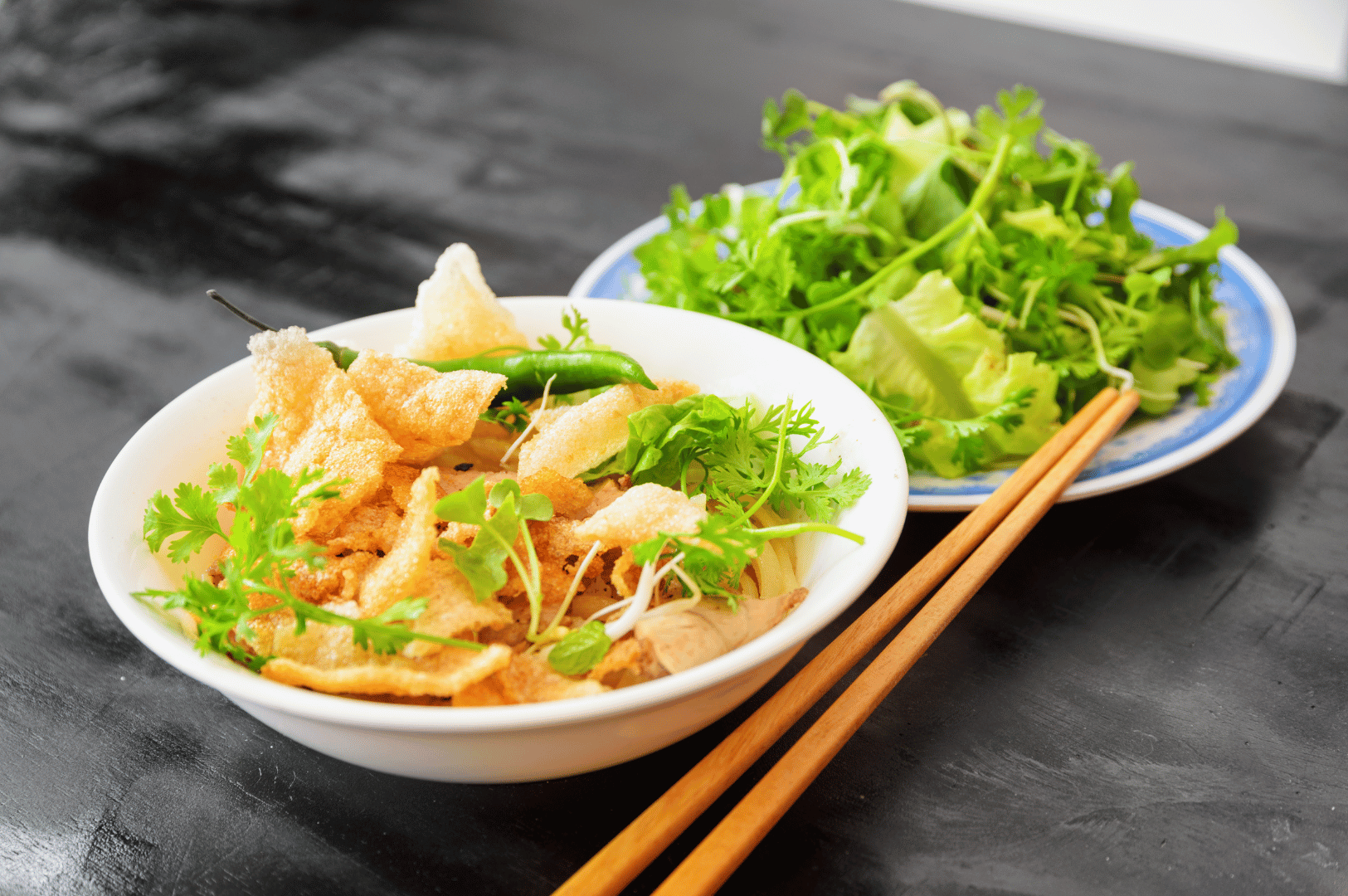
Understanding Cao Lau requires stepping back into the 16th and 17th centuries, when Hoi An was Southeast Asia’s most vibrant trading port. Merchants from Japan, China, Portugal, the Netherlands, and elsewhere arrived, each bringing food traditions and flavors that transformed the city’s table. The Japanese, in particular, left a visible and lasting impact: the noodle dish's thick, chewy texture suggests a Japanese influence, reminiscent of udon and central aspects of Japanese cuisine. The iconic Japanese Covered Bridge still stands today, marking the ancient town's layered past.
Cao lau noodles are thought to have originated from this melting pot, with many linking their signature texture to Japanese influence on Vietnamese food. Local legends describe Japanese traders using Vietnamese rice, Ba Le well water, and lye solution to craft noodles reminiscent of their homeland. Others instead point to the flavors of char siu pork and Chinese marinade—soy sauce, garlic, sugar, salt, and pepper—as evidence of a Chinese touch. Some even connect the crispy noodle croutons to Chinese cuisine, or note how the minimal broth, fresh green vegetables, and fresh greens are distinctly Vietnamese staples found in celebrated noodle dishes across the region.
Despite these theories, the true Cao Lau history remains shrouded in mystery. Was it a gift from Japanese cuisine, an evolution of Chinese noodle dishes, or a product of culinary fusion unique to Central Vietnam? At first glance, no dish exemplifies Hoi An’s adaptability and creativity more; the truth, as locals say, is probably as layered as the meal itself—layered with bean sprouts, lettuce, unique noodles, fried rice crackers, and savory pork.
The Unique Ingredients of Cao Lầu Noodles and Grilled Pork

Every serving of authentic Cao Lau begins—and ends—with careful ingredient selection. The chewy, golden brown noodles, known as cao lầu noodles, are made from high-quality rice, soaked in a lye water solution sourced from the Ba Le well. This well, acclaimed throughout Hoi An, produces water with unique mineral content; when mixed with lye from wood ash on Cham Island, it gives the noodles their signature chewy texture, firmness, and subtle smoky notes—making them unlike any other rice noodles in Vietnamese cuisine, or even other ancient town favorites like mi quang.
These noodles are rarely found outside Hoi An, as only local water and traditional lye result in authentic Cao Lau noodles. Once soaked and cooked, the rice is ground, then steamed into sheets, sliced into thick ribbons, and some reserved for deep fry to create crispy rice crackers or croutons. These crackers—sometimes called “pork crackling”—are fried until golden brown, offering the vital crunch in every bowl.
But no Cao Lau is complete without its marinated pork. Traditionally, pork shoulder or belly is prepared with a rich pork marinade: a blend of soy sauce, fish sauce, garlic, sugar, five-spice powder, salt, and black pepper. The marinated pork is then slow-cooked until tender, sliced into thick pork slices, or sometimes grilled pork, echoing the char siu pork of Chinese cuisine. The resulting pork marinade is cooked down with chicken stock and pork bones, producing the dish’s signature minimal broth—more of a sauce to coat the noodles than a soup, intensifying each bite's flavor profile.
Serving wouldn’t be complete without fresh greens and herbs: lettuce, bean sprouts, mint, basil, and often morning glory signature leaves, usually from Tra Que Vegetable Village, a celebrated source for the finest herbs and fresh green vegetables around Hoi An. The addition of crispy rice crackers, fried peanuts, or even white rose dumplings on the side, makes the dish both visually stunning and complex in texture. Every bite brings together pork, herbs, noodles, fried elements, and the nuanced interplay of savory, umami, and herbal notes that define this unique noodle dish.
The Traditional Preparation Process: Ba Le and the Art of the Noodle Dish
Creating a bowl of authentic Cao Lau is an act of devotion. The process starts days in advance with meticulous rice selection—cleaned, soaked in lye water from the Ba Le well, then ground and mixed with boiling water. This creates a thick paste, which is steamed into pliable sheets, then hand-cut into noodles. Some sheets are deep-fried for rice crackers, creating the dish’s signature contrast between chewy noodles and crispy, golden brown elements.
For the pork, Hoi An chefs trust an age-old pork marinade that blends soy sauce, fish sauce, garlic, sugar, salt, pepper, and five-spice. The marinated pork is seared in a hot pan, then slow-cooked or roasted, producing pork slices rich with umami and herbs. The drippings and cooking liquid, combined with chicken stock and pork bones, reduce to a lush, minimal broth—used sparingly to keep each bowl balanced and not soupy.
Assembly brings everything together: a base of fresh greens and bean sprouts, a nest of cao lầu noodles, succulent grilled pork or char siu pork slices, a ladle of the deeply flavored minimal broth, and a crown of crispy rice crackers or pork crackling. Herbs and greens from the vegetable village, fried shallots, and sometimes a touch of green chilli or pepper complete the bowl. "The noodles must be chewy, the pork deeply marinated, the broth concentrated, and every flavor harmonious in one serving," a local chef shares.
Cultural Significance of Cao Lau, Mi Quang, and Hoi An
Within Hoi An, Cao Lau is not merely food; it’s a badge of heritage, culinary storytelling, and local pride. This authentic noodle dish stands as a UNESCO-recognized tradition, reflecting Hoi An’s history of embracing outside influence—whether from Japanese cuisine, Chinese food, or other Southeast Asia traditions. Both locals and travelers view it as a point of pride—a dish to eat at a favorite family-run stall, share among friends, or feature in Hoi An culinary tourism.
Tourists see Cao Lau as a rare treat, eagerly sampled alongside mi quang and white rose dumplings, while locals cherish it as a dish filled with memory and belonging. Through local markets and bustling street food stalls, the presence of Cao Lau, mi quang, and other ancient town specialties illustrates Hoi An’s fusion of the old and new—preserving its identity through food and inviting everyone to taste a story centuries in the making.
Where to Find the Best Cao Lau in Hoi An Ancient Town

The search for the best Cao Lau in Hoi An ancient town is a joyful journey for any lover of Vietnamese cuisine. Authentic bowls are most often found at traditional street stalls or time-honored restaurants, where cooks stay faithful to the culinary roots—using Ba Le well water, lye solution, and fresh herbs from Tra Que.
Top options for an unforgettable noodle dish:
- Cao Lau Ba Be: Central Market food court; local favorite; classic flavors. Extra cost for a loaded bowl is minimal, making it an essential stop for budget travelers.
- Morning Glory Signature: A slightly upscale restaurant celebrating Vietnamese food in the ancient town, known for balance and a consistent serving of fresh greens.
- Quan Cao Lau Thanh: Just outside the tourist center, famous for hand-cut cao lầu noodles, a rich pork marinade, and deeply flavored broth.
- Hoi An Central Market Stalls: Lively, local, and wallet-friendly, with bowls crafted fresh to order—watch for cooks using Tra Que greens for authentic experience.
- Ty Cao Lau (Phan Chu Trinh): Family-run, brimming with fresh herbs, pork slices, and plenty of green chilli for those seeking a little heat.
Expect to pay between 30,000 and 75,000 VND per serving, depending on portion size and location. Arrive early—by lunch or early dinner—as stalls often sell out of their authentic cao lau noodles before nightfall. When choosing, look for a bowl with thick, dark noodles, minimal broth, and a mountain of fresh greens and fried toppings. Ask stallholders about their pork marinade and Ba Le well water for the full story behind every dish.
How to Eat Cao Lầu and Grilled Pork Like a Local
Eating Cao Lau is a feast for the senses, and there’s a local etiquette to enhance the experience. First, thoroughly mix the noodles, fresh greens, bean sprouts, pork, pork crackling, and minimal broth—so each bite is a vibrant, lively blend. Customize with condiments: a splash of fish sauce, a squeeze of lime, a dab of green chilli, and a sprinkle of pepper. Taste, adjust, and enjoy every mouthful.
Chopsticks and a spoon are the tools of choice; don’t be shy about slurping noodles—a sign you’re savoring the flavor. Pair your bowl with iced tea or a local beer (a classic drink in Hoi An). Share food and side dishes, like white rose dumplings or fried spring rolls, and take your time to fully appreciate this ancient town ritual.
Modern Interpretations: Cao Lầu Noodles and the Noodle Dish Unique to Hoi An
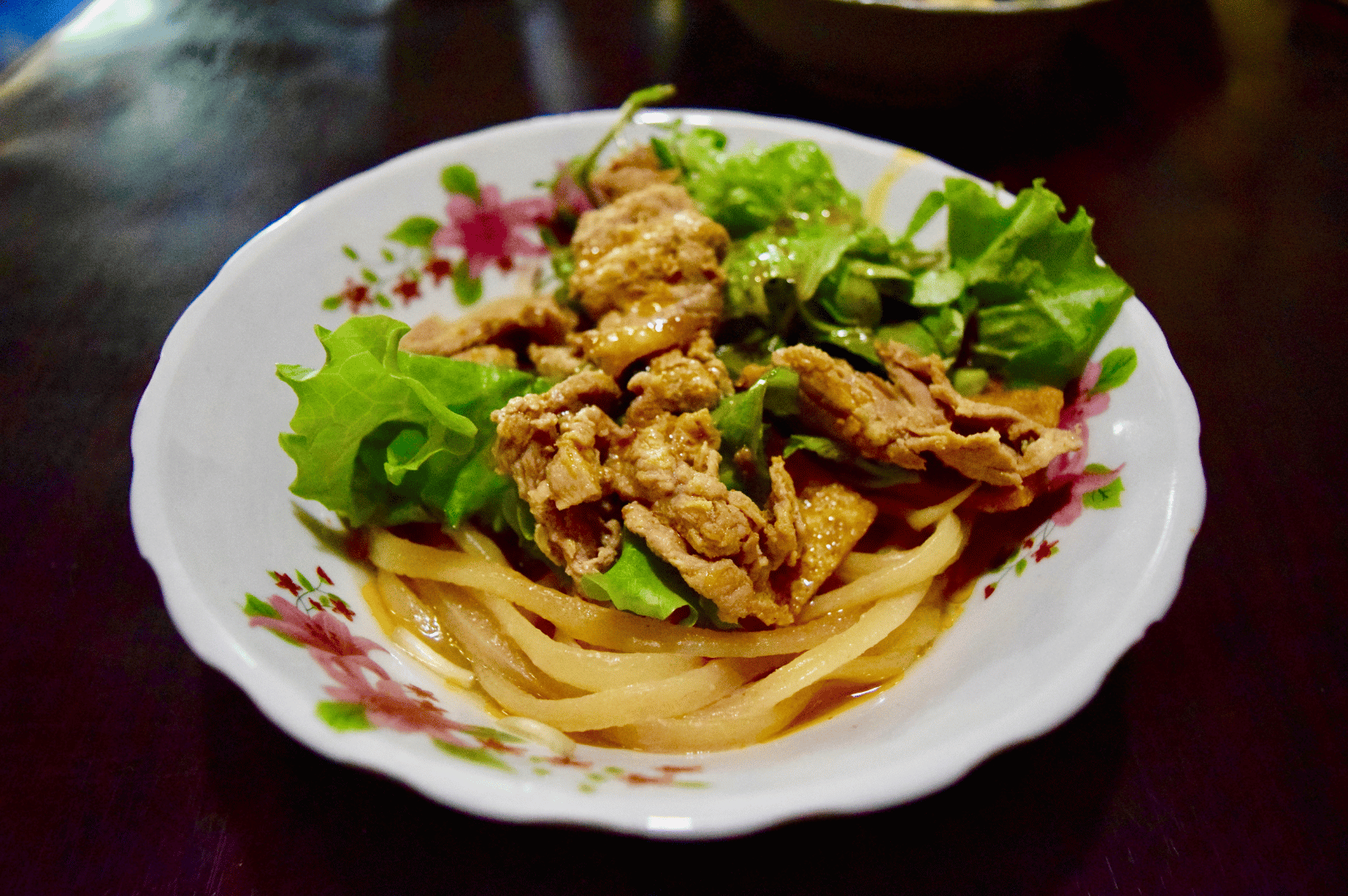
Contemporary chefs across Vietnam and abroad are paying homage to Cao Lau with creative takes while honoring tradition. Vegetarian adaptations may swap grilled pork for marinated tofu or jackfruit, maintaining the concentrated pork marinade flavors with a blend of soy sauce, garlic, five-spice, and vegetable broth. Fusion efforts sometimes use udon or thick rice noodles when cao lầu noodles are unavailable—always striving to replicate the chewy texture, crispy rice crackers, and minimal yet bold broth.
While purists insist that the unique noodles and combination of Tra Que herbs and Ba Le well lye solution are essential, modern approaches showcase the dish’s capacity for reinvention and adaptability—true to the spirit of both Hoi An and Vietnamese cuisine. Even when extra cost or local ingredient substitutions are required, the heart of Cao Lau lies in its textures, flavors, and sense of place.
Simplified Recipe for Ba Le Cao Lầu Noodles at Home
Though replicating authentic Cao Lau outside Hoi An is nearly impossible, you can cook a satisfying version at home. Here’s a simplified, globally-accessible take:
- Noodles: Use Japanese udon or thick rice noodles to mimic authentic cao lầu noodles.
- Pork: Create a pork marinade with soy sauce, fish sauce, garlic, sugar, salt, pepper, five-spice, and a splash of chicken stock. Marinate pork belly or shoulder for at least two hours, then sear in a pan and simmer with pork bones and water until meltingly tender. Slice thinly for serving.
- Rice Crackers: Deep fry wonton wrappers or bits of leftover noodles to mimic the golden brown crisp of Hoi An rice crackers.
- Assembly: In a large bowl, add bean sprouts and lettuce, a portion of noodles, pork slices, a few spoonfuls of minimal broth. Top with fresh greens, mint, basil, crispy crackers, and morning glory. Finish with fried shallots, roasted peanuts, green chilli, and a squeeze of lime.
Tip: To achieve the most authentic taste, focus on the noodles' chew, flavor-packed pork, and the interplay of crispy, fresh, and savory. Sourcing fresh herbs or vegetables from a local farmer, or using organic greens, will enhance the flavor. Embrace the spirit of Hoi An’s famous vegetable village and make the dish’s preparation a labor of love—just as generations of cooks before you have done.
Conclusion: Preserving Culinary Heritage — Cao Lau in Hoi An
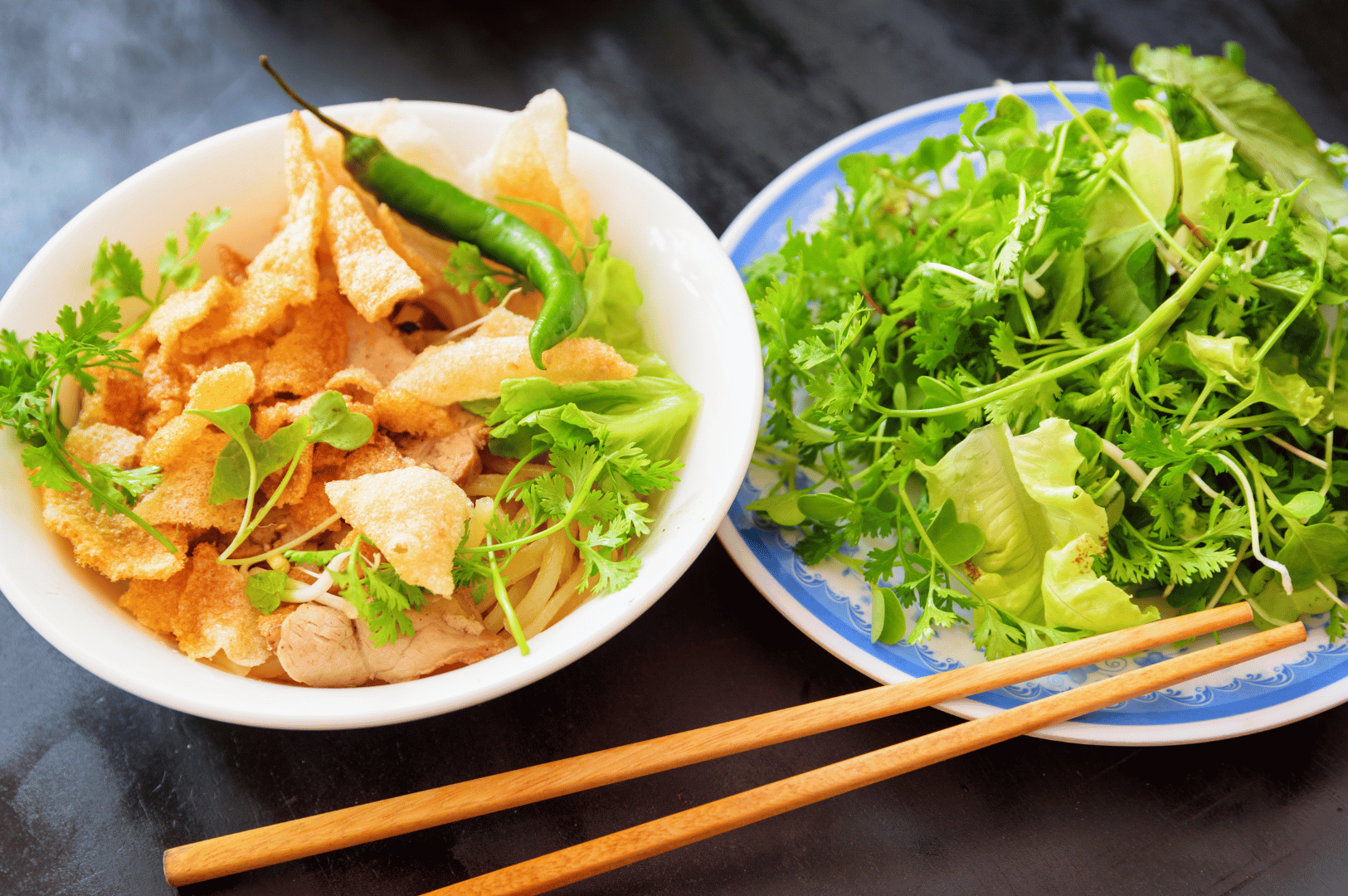
Cao Lau stands as one of the great noodle dishes in Vietnamese cuisine—a noodle dish unique to Hoi An, shaped by Japanese influence, Chinese foodways, and Vietnam’s resourceful culinary spirit. Every bowl is a tribute to local rice, pork, bean sprouts, fried crackers, Tra Que fresh herbs, and the famed Ba Le well—a harmony that cannot be overlooked by anyone traveling through Central Vietnam.
When you eat Cao Lau in Hoi An’s ancient town, you taste not just a carefully assembled meal but centuries of history, community, and adaptation. Regional specialties like this, rarely found elsewhere, are what make travel memorable and culinary tourism so rewarding. So when you next visit Hoi An, seek out authentic cao lau. Sit among locals, breathe in the savory steam rising from your bowl, and celebrate the enduring story of Hoi An—one unforgettable noodle dish at a time.
To explore more culinary heritage, read about the 5,000-year journey of Chinese tea or discover the rich plant-based traditions of Gujarati thali.
The Art of Asian Tea Ceremony Traditions: Ancient Rituals and Cultural Values Across Asia
Dio Asahi | November 15, 2025
A cup of tea, in many parts of Asia, represents far more than a beverage-it is a conduit to ancestral tradition, intellectual pursuit, and the cultivation of mindfulness. Asian tea ceremony traditions turn the act of drinking tea into a sophisticated art form, layered with symbolism, philosophy, and socio-cultural values. Each gesture, from scooping powdered…
The Art of Slow-Cooked Curry Recipes: Time’s Magic in South Asian Cuisine
Eda Wong | November 13, 2025
Step into a South Asian kitchen, and the senses are instantly enveloped by the inviting aroma of food slowly simmering in a sturdy clay pot or heavy vessel. The allure is undeniable: in this space, slow-cooked curry recipes are a celebration of patient tradition, spices, and the richness of South Asian cuisine. Here, time and…
Bandung Drink Recipe: A Singaporean Rose Syrup Drink Tradition
Eat Drink Asia Team | November 11, 2025
Step into any night market or hawker centre in Singapore, and you’ll spot a vibrant, glowing glass filled with a cold, beautiful drink-Bandung. Known for its iconic blush-pink hue and refreshing taste, this rose syrup drink is an integral part of Singapore’s beverages scene and a cherished tradition in Southeast Asian gatherings. More than just…
The Ultimate Hainanese Chicken Rice Recipe: A Deep Dive
Eda Wong | November 8, 2025
To wander through Singapore’s bustling hawker centres on a humid evening is to experience a symphony of sights, sounds, and smells. Among the many other dishes sizzling away, one plate stands out for its elegant simplicity: Hainanese Chicken Rice. It arrives without fanfare-gleaming slices of poached chicken over fragrant rice, flanked by a trio of…
Bubble Tea Origins: How Taiwan Created a Global Beverage Phenomenon
Dio Asahi | November 6, 2025
From Taipei to New York, a single drink has captured the world’s taste buds: bubble tea. This beverage, known as pearl milk tea or boba tea, and also known as boba in many regions, is celebrated for its delightful combination of sweet, creamy tea and signature chewy tapioca pearls. What began as a novel creation…
A Food Lover’s Guide to the Taiwanese Oyster Omelet
Eat Drink Asia Team | November 4, 2025
As twilight descends upon Taipei City, a vibrant energy pulses through its streets. This is the hour of the night markets, bustling hubs of community, commerce, and some of the world’s most incredible street food. Amidst the steam from soup dumplings and the sizzle of Taiwanese fried chicken, one iconic dish reigns supreme: the Taiwanese…
Jamu: Indonesian Herbal Medicine for Modern Well-Being
Dio Asahi | November 1, 2025
Across the Indonesian archipelago, a vibrant tradition of herbal healing has flourished for centuries. This is jamu, a cornerstone of Indonesian cultural heritage and a sophisticated system of traditional herbal medicine. Far more than just a refreshing drink, jamu represents a philosophy of balance, a deep connection to nature, and a form of indigenous medicine…
Padang Beef Rendang: The Complex Process Behind Indonesia’s Most Famous Dish
Eda Wong | October 30, 2025
This post may contain affiliate links. For full transparency, this article may contain affiliate links. To call Padang beef rendang simply a dish is to miss the soul of Indonesian cuisine. This legendary slow-cooked dry curry, a centerpiece of both festive tables and humble meals, has earned its fame as one of the world’s most…
Teh Tarik Malaysia: The Art and Science Behind Iconic Pulled Tea
Eat Drink Asia Team | October 28, 2025
In Malaysia, ordering a cup of teh tarik is about so much more than just enjoying a hot drink. Teh tarik, literally translated as “pulled tea,” is Malaysia’s national beverage, famous for its sweet, creamy taste, frothy top, and the spectacular pulling technique seen in bustling mamak stalls and coffee shops across the country. A…
The Legendary Penang Char Kway Teow: A Culinary Journey
Dio Asahi | October 25, 2025
The air in Penang is thick with anticipation, carrying the sounds and smells of Malaysian street food being crafted with expert care. Your attention is captured by one of the many street vendors, a master standing before a seasoned wok glowing over an intense fire. The rhythmic clanging of metal on metal is the soundtrack…

